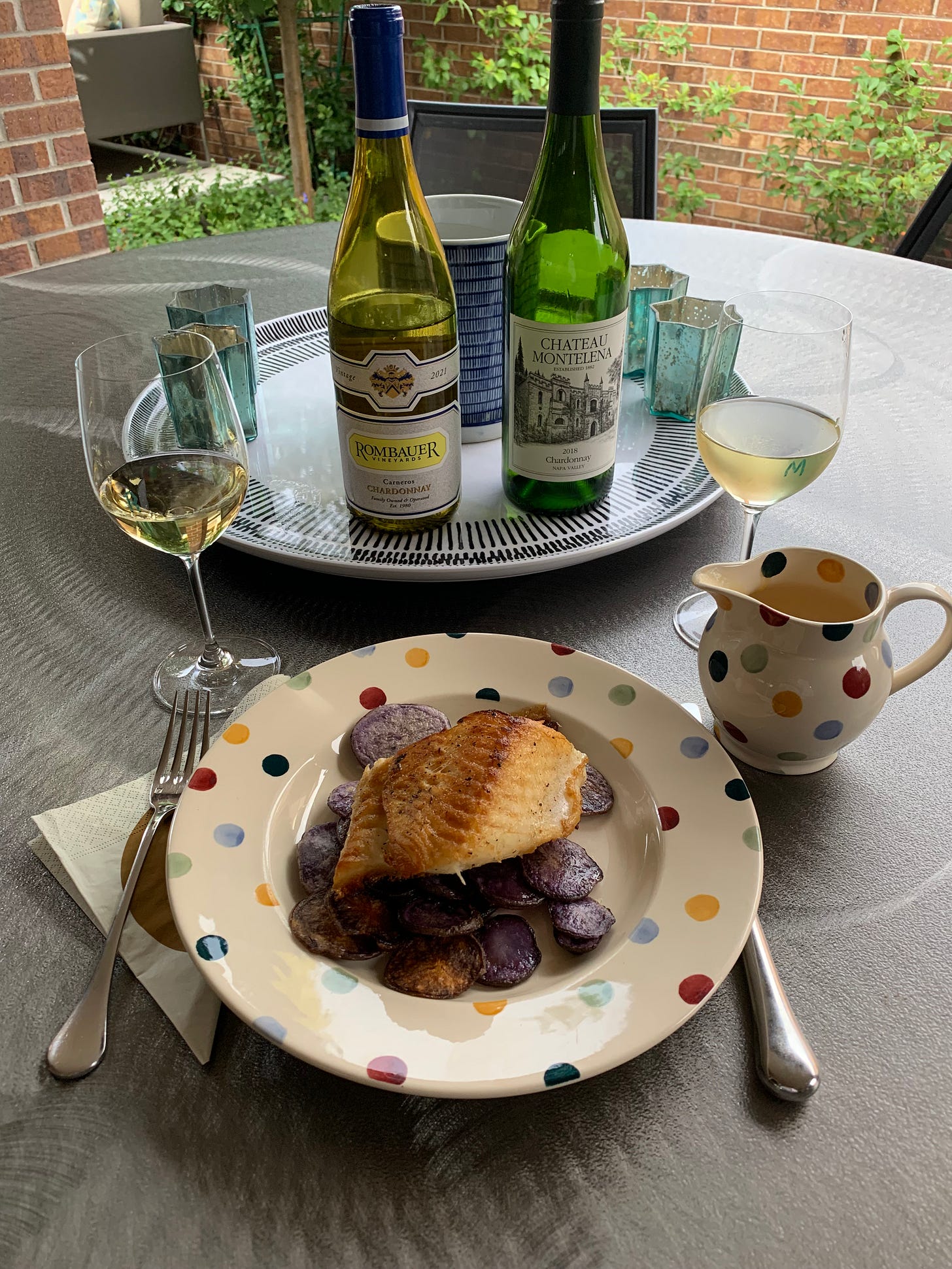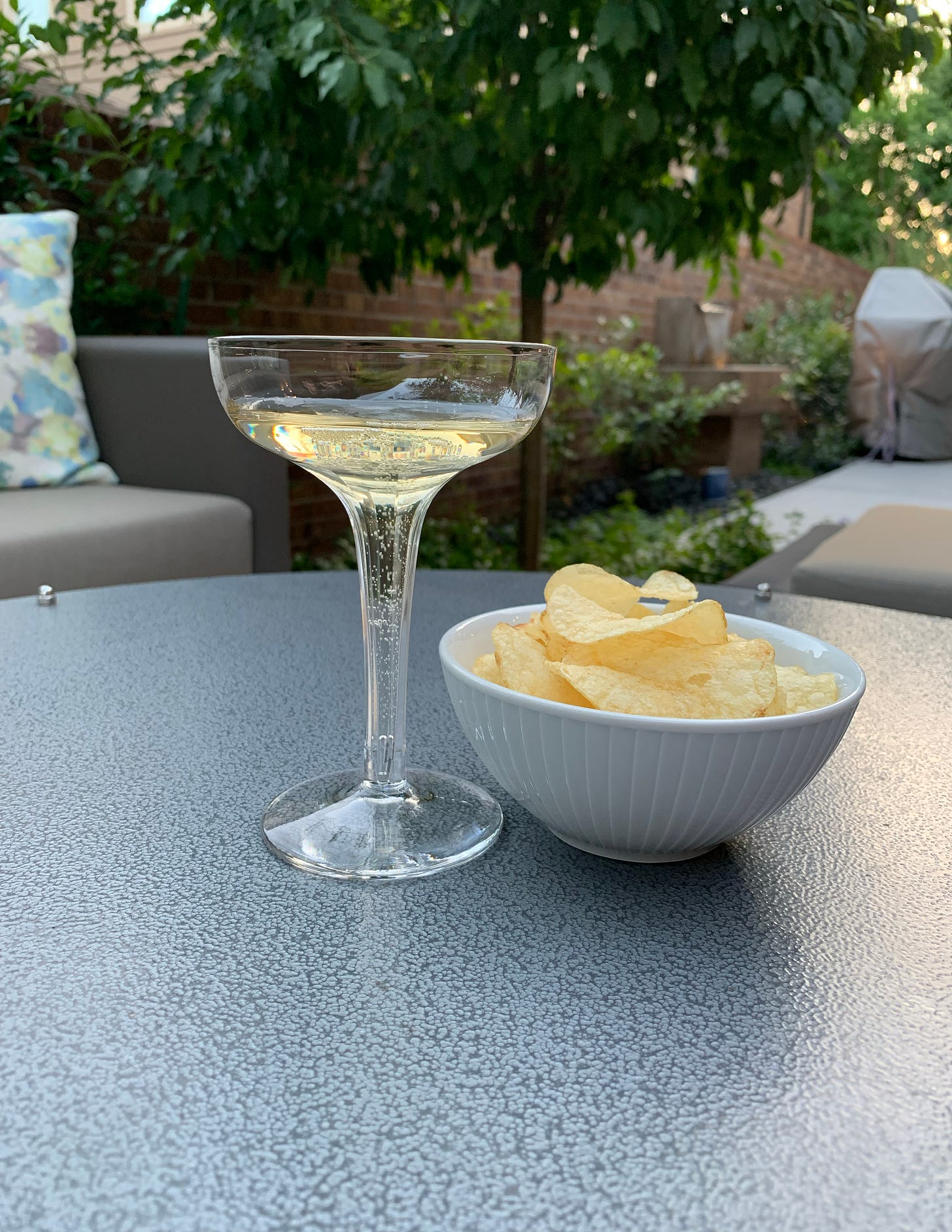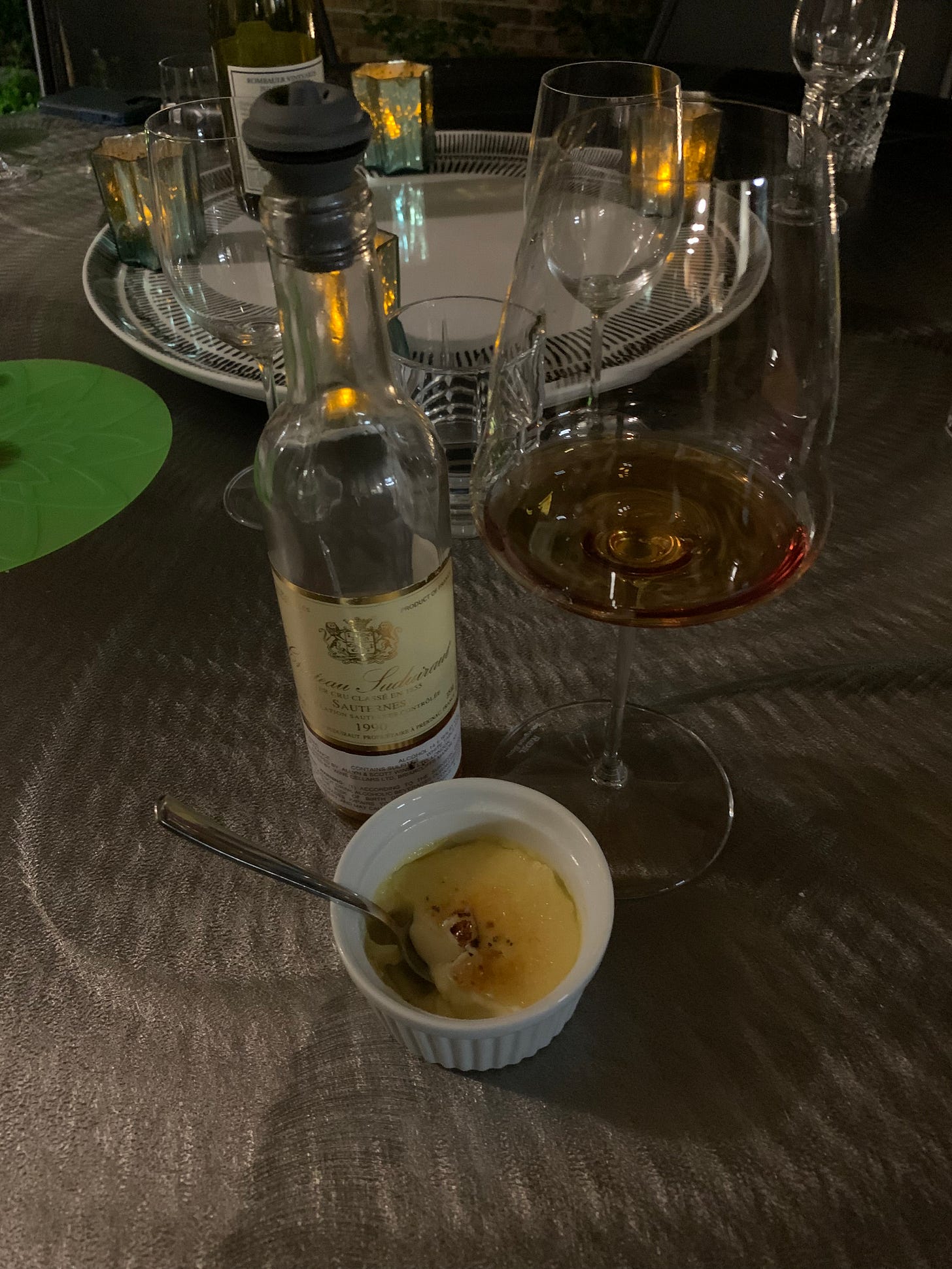Food Comes First
A beginner's guide to wine pairings
You’ve just sat down at an upscale restaurant, gorgeous blonde sitting across the table, and been handed a leather-bound wine list twice the size of the menu — what do you order? Man’s knowledge of wine is only as valuable as his ability to pair it seamlessly with food. As a certified sommelier, manager of a family wine cellar, and a lifelong culinary enthusiast, I’m here to guide you. Welcome to your ultimate playbook for pairing food and wine, a skill that elevates any dining experience.
The Fundamentals
First, let’s step back in time to cover the fundamentals. Long before famous vineyards had the luxury to plant grapes for wine, they were all agricultural — they grew food to survive. It was only natural for vinters to tailor their wines to be most pleasant with their local cuisine. So, when you’re in doubt, go for a wine from the same region as your meal. But be specific. Saying “I want an Italian wine with my Pasta” won’t cut it.
Italy may be small, but its wine regions are as diverse as they come, each influenced by its unique climate. That’s why a Pasta Bolognese pairs so well with a Sangiovese from Bologna—it’s in the name, after all.
The role of protein in your wine pairing is often misunderstood. It’s not the meat itself that’s the star, but how it’s seasoned — be it a rub or a sauce. When choosing a wine, focus first on how it will complement the sauce, then consider the meat’s body or heft. I recently tested how two California Chardonnays pair with white fish a la beurre Blanc: one wine was light and balanced, harmonizing beautifully with the fish, while the other was too overpowering in both body and oak, even though I used it in the sauce. This principle is true regardless of your wine’s color. Light bodied red wines can be lovely with fish, just as bold whites can handle the might of a juicy steak — it’s all a matter of body.
Finally, don’t overthink it. Food and wine are natural companions, and while there are exceptions (like the chemicals in bell peppers that can turn a wine rancid in your mouth), most pairings will be delightful. Outliers aside, whatever you choose will probably be great. Too much effort and you’re chasing diminishing returns, so just pick something and see what you think! With that in mind, here are some suggestions for pairing food and wine commonly found on menus and wine lists.
Sancerre and Goat Cheese
Sancerre is an appellation d’origine contrôlée (AOC) on the left bank of the Loire Valley, most famous for its delicate Sauvignon Blancs. This region also produces excellent goat cheese. I recently served a soft Florette Goat Milk Brie and a hard Cypress Grove Midnight Moon, paired with a 2019 Domaine Dominique et Janine Crochet Cuvée Prestige, for visiting family; it was the perfect way to start the evening. Additionally, Sancerre serves as an excellent entry point for Americans looking to explore French wine — they’re affordable and commonly featured on both shelves and wine lists. Pro tip: $30/wedge a bit rich in this economy? Dig around the “ends” bucket in the cheese section at Whole Foods. Usually, you can pick up the last nubs of precut cheeses at odd weights for $2-10 a piece. Pick 3 and host a small tasting!
White Fish w/ Beurre Blanc and Chardonnay
When looking for wines to pair with fish, I cast my mind to coastal towns known for their fish, then look to their nearest wineries and often find chardonnay. (In)famous for its buttery notes, it’s only natural to pair a nice chard with a fish prepared in butter. Beware: Too much oak can easily overpower your fish, so ask for something lighter on oak. Without naming names, if you see women over 50 ordering a certain chardonnay by the gallon at your local steakhouse bar, pick something else for white fish.
Chicken and (Almost) Anything
In the wise words of Mouse from the Matrix, “You take chicken, for example, maybe they couldn’t figure out what to make chicken taste like, which is why chicken tastes like everything!”. This logic is sound and applies to wine pairing. Any medium-body red or white will be great, just keep the region consistent with the chicken’s spicing.
Potato Chips and Champagne
Your Potato chips must come from the Potato region of Idaho, otherwise it’s a sparkling French fry. Jokes aside, these two components complement each other despite different origins. Commonly served together at champagne bars, the sharp acidity and drying effect of champagne creates space for the chip’s salt and fat to shine. While chips designed for wine exist, stick to a plain, salt-only chip for champagne.
Duck Confit and Pinot Noir
The last time I sipped a great pinot, I gazed into my glass and said, “This would go beautifully with duck.” Pinot noir offers a wide range of tasting notes and tends to be high in acid. Duck, high in fat, is extremely decadent. The acidity from pinot noir cuts through the fat of the duck, making a beautiful pairing.
The French have mastered the art of serving duck, but you might try a Willamette Valley Pinot here. The Willamette Valley, Oregon and Bordeaux, France both sit on the 45th parallel. The similar growing climate has attracted many French vintners to open sister wineries in Oregon, often selling at a discount to their French counterparts.
Steak Florentine and Brunello Di Montalcino
Bistecca alla Fiorentina (or steak Florentine) is a traditional steak recipe from Florence, Italy. Take a tremendous, 2-inch-thick Porterhouse, grill it on open flame over smoked olive branches, and serve rare with a drizzle of cold-pressed EVOO atop a bed of lightly sauteed spinach. Brunello Di Montalcino hails from Siena, a town just south of Florence, a bit closer to the coast with steeper hills and less rainfall. The hotter climate gives these wines more power and body than other Sangioveses grown nearby. This really is a match made in heaven, also known as Tuscany. Next time you’re in the mood for an unapologetic steak, ask your butcher to cut you a 2-inch-thick Porterhouse. If you don’t have olive branches growing in your backyard, throw these dried olive leaves in a smoker box and get them smoking before you add your meat. 2015-17 were great vintages for all Italian wines, so ask your local wine merchant if they have any ’15-17 Brunello and pick something within your price range (anything from $40-100 should be great).
Crème Brûlée and Sauternes
When it comes to dessert pairings, the wine must always be sweeter than the dessert itself. The striking vanilla notes in Crème brûlée should be perfect for an Armagnac or even a Bourbon, but their lack of sweetness make them fall flat. Enter Sauternes, a beautifully complex white wine grown from intentionally rotted Semillon grapes in Bordeaux.
These wines are incredibly sweet, surpassing the 4% Residual Sugar Index (RSI) colloquially known as the Great Wall of Sugar. Ideally, one would always have a Chateau d’Yquem on hand, but for us mere mortals Chateau Suduiraut will give you the classic Sauternes experience without breaking the bank. Pro tip: Sauternes sweetness makes it very difficult to finish a full bottle, and its price makes losing a bottle to oxidation painful. Look for the 375ml format, it’s a more manageable serving size.
WILD CARD: Barbecue and Amarone
This one shouldn’t work, but it does. Amarone di Valpolicella is an Italian red wine that uses a similar rotting process to the Semillon grapes in Sauternes to create something sweeter than most reds, but still below the Great Wall of Sugar, making it unsuitable as a dessert wine. It’s tough finding foods that match these criteria. My Sommelier course professor suggested I try Amarone with barbecue, so I picked up some burnt ends and baked beans from my favorite local BBQ joint and poured a splash of 2016 Zenato Amarone with a Coravin. I was amazed how great they taste together. Both barbecue and Amarone are sweet and smoky, and the wine’s earth tones set the stage for the spices in the sauce to dance.
This article was written by Oswald Andrews.
You can find him on X (Twitter).
This article was originally published in Issue 17 of the WARKITCHEN magazine. You can read it in its original form here. Every member on the list @ warkitchen.net gets first access to every magazine release, right in their email inbox.
Thank you for reading the WARKITCHEN. Till next time 🥂
P.S You can read all of our previous issues @ warkitchen.net/magazines






